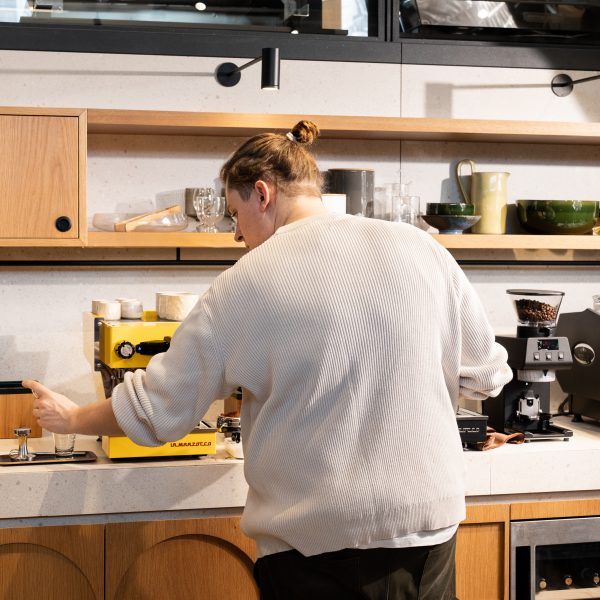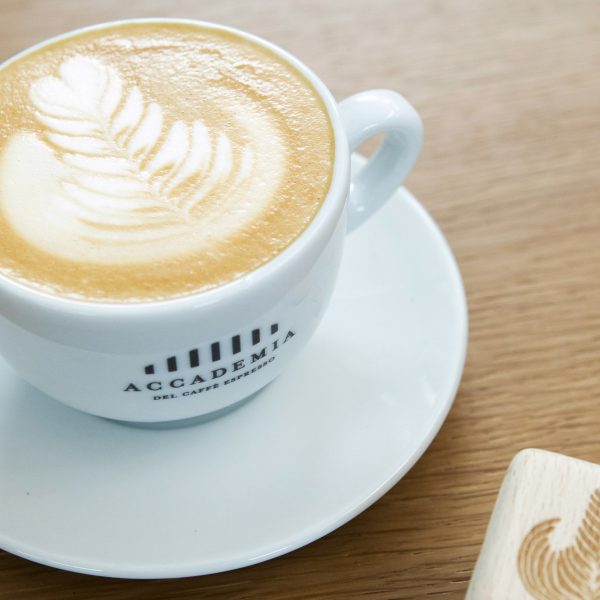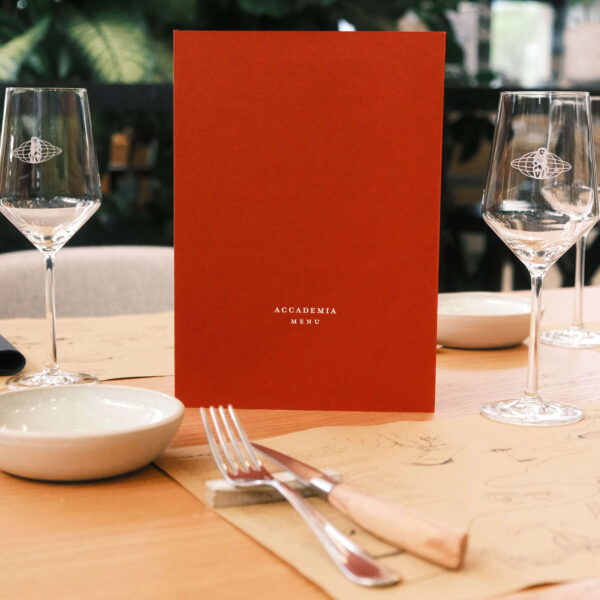Blog
I used to work as a welder for a company making small metal parts. Thanks to that experience, I was called by La Marzocco because their longtime welder, Ugo, was retiring, and they needed a replacement. Ugo was responsible for torch welding the boilers and all the hydraulic pipes. I remember my first day—it was towards the end of 1994—I came up from Florence for an interview. I entered the workshop and was greeted by this gentleman in a black smock worker’s jacket. It was Piero Bambi, but I thought he was just another worker. I might have even spoken to him informally because he welcomed me in a very friendly, down-to-earth way, saying, “Come, come, I’ll take you to the welder.” He led me to Ugo, who immediately started speaking in a raised voice, and I thought he was the boss. Ugo was supposed to have retired already, but they hadn’t found a replacement.
I don’t recall if it was that day or if I returned the next morning, but I remember they had me try welding some pipes while Piero stood there, quietly watching me the whole time. It was a bit awkward because he didn’t say anything, but I was 20 years old and pretty confident, so it didn’t faze me much.
After a few days, Piero told me, “It’s a pleasure watching you work; you can see that you’ve got skill and experience.” I don’t remember if I had to go through a trial period or if they hired me right away, but either way, I stayed.
At first, Ugo was very tough. He was a skilled welder with both electrodes and torches, but you had to do everything exactly the way he told you. He worked with me for a year, teaching me this important job. We had to weld all the pipes for the hydraulic system and the two boilers in every machine, which were still silver-soldered at the time. We were already using TIG welding for the end plates, but Ugo wasn’t experienced with the TIG welder. He used it, but it was clear someone had set it up for him and told him how to use it. So he’d always say to me, “DON’T TOUCH THOSE KNOBS!”
I learned TIG welding at La Marzocco a year or two later, once I was on my own. For American regulations, we had to eliminate all the brass that could come into contact with water, so we had to switch everything to TIG welding. I was sent to Seattle, where La Marzocco had a small factory assembling machines for Starbucks. I spent ten days with a welder named Jessie, who taught me the basics. I learned the rest with Piero, who bought books and taught me what he’d studied. It was a beautiful thing—Piero was a wonderful person.
I quickly realized that La Marzocco was a special place. Piero could have just acted like the boss, but instead, he worked alongside you, facing the same challenges. He was the first to research and provide guidance on how to approach problems together. A boss who also served as a teacher. Maybe sending me to a welding course would have saved time, but at that point, everything was about doing as much as possible in-house, saving wherever we could.
With Ugo, the work pace was intense. We had to make pipes for sixty machines a month, so I prepared sixty pipes for each type. Back then, we were only producing the Linea Classic. All day long, bending, cutting, and filing pieces by hand—everything done manually. Then we’d seal the boilers. It was fairly straightforward; the group was attached to the boiler with bolts, so we only had to add two end plates and weld a small fitting. But always with the torch.
Production increased, and it became unsustainable. I made all the templates and jigs to standardize and simplify the workflow. We still do it that way, but back then, everything was homemade and a bit rudimentary. Now, the process is much more refined.
The old-school mentality was to save and do everything yourself. Whenever something new was needed, Piero would say, “Let’s try to make it ourselves first; maybe later, we’ll buy it.” I don’t know if it was because there wasn’t money or if it was just a mindset—a habit of making do with what you had, even if it took a lot of time and effort. I think this mindset sticks with you, even if you become wealthy.
The welding shop was like many old-fashioned artisan workshops: dirty and chaotic, with pin-up calendars on the walls. But there was a small skylight in the roof that let in beautiful light, and that struck me immediately. Behind the room was a little window that overlooked the woods. Piero was strict about safety, though. We had an exhaust system in place.
In the beginning, we created the entire espresso machine, at least all the welding. The entire hydraulic system and the heart of the machine—the boiler. I think Piero valued this department a lot. If the heart of the machine was poorly made, it caused problems, especially with reliability, not just safety. There were already a thousand safety devices in place by the 1970s, but reliability impacts reputation.
During lunch breaks, everyone would go play soccer, but I’d go up on the roof, where you could see Fiesole, Monte Morello, and Florence on one side, and the woods on the other. Even though the woods weren’t Piero’s anymore, we’d still go over there and pick wild asparagus. Sometimes, while the others played soccer, I’d act as the ball boy, jumping the fence and heading into the woods to retrieve the ball.
For me, La Marzocco immediately felt like a special place. Before coming here, I’d worked at five or six different jobs, and what I experienced at La Marzocco was something I hadn’t felt anywhere else. It was all about the human connection.
People used to say that Piero was a tyrant, but I quickly grew fond of him precisely because he was like that. I think we shared the same passion for the work—the spark passed down by the two Bambi brothers (the founders, Piero’s father & uncle) through Piero. That was the feeling you got—the passion for the work. At first, I wasn’t passionate about it. I just liked the fire. The first time they handed me a torch, I thought, “Wow, fire!” But when I saw Piero reading books, diving deeper to help me improve… and doing it together, you could tell that someone had done the same with him—his father and uncle. At least, that’s what I think. That’s the special thing about La Marzocco, the thing that should be kept alive: passing on that passion. As Piero used to say, you can’t pass it on or teach it; a person finds it only through work and dedication.
When we left Pian di San Bartolo, everyone said that the same atmosphere could continue in another place, but many of us were skeptical. Piero told me, “Well, I don’t get attached to places.” I always thought that was his way of pushing us forward, but I don’t think it was true. Because the people who built Accademia came back to the old factory. And it goes back to the same two people responsible for all of this—the Bambi brothers and Piero.



